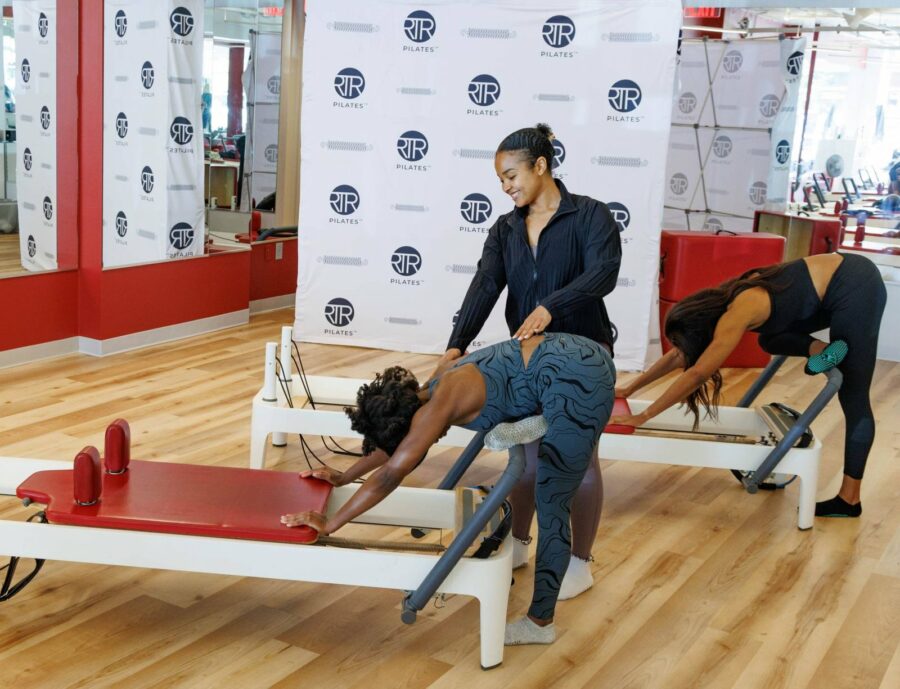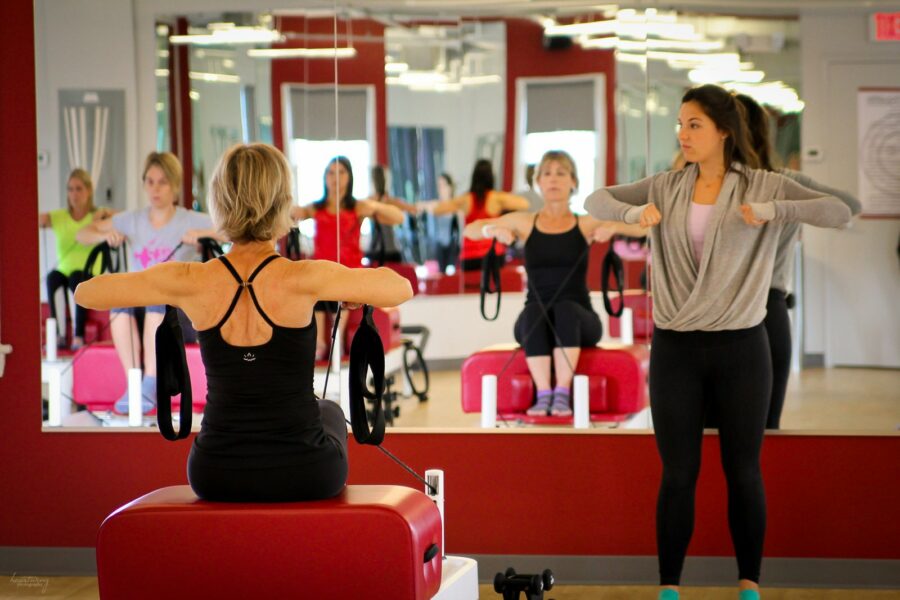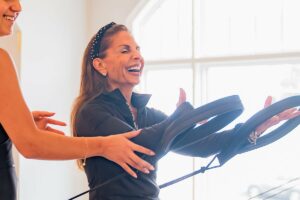 Pilates for beginners offers a wide range of exercises. There is no need to wait until you’re an advanced practitioner to enjoy a world of potential movements and stretches!
Pilates for beginners offers a wide range of exercises. There is no need to wait until you’re an advanced practitioner to enjoy a world of potential movements and stretches!
However, many folks “over a certain age” assume that because of the level of flexibility they often see in Pilates movements, it is not the right workout for them. In fact, Pilates is a perfect exercise for anyone at any age!
Reformer Pilates is a gentle type of exercise that is adjustable based upon a person’s abilities and limitations. For seniors, maintaining flexibility and joint health is essential, because these elements will dictate what sorts of activities an older person can enjoy later in life.
Here are some of the best Pilates exercises for seniors that are gentle on the joints while still promoting flexibility and strength.
Can Seniors Do Pilates?
If you’re wondering whether seniors can (or should) do Pilates, the answer is yes! Pilates is a great way to keep the body active and mobile without placing undue strain on the joints.
Unlike impact-based exercises such as jogging, Reformer Pilates uses a person’s body weight and resistance from tools such as reformer machines to encourage the body to grow strong, flexible, and stable.
Since seniors are more at risk for certain types of injuries, such as fall injuries, Pilates is especially useful; the stability and strength gained from these exercises has been shown to decrease the risk of falls in older adults, too.
If you are getting older and worry that you cannot keep up with the Pilates exercises in class due to limitations on flexibility, strength, or joint mobility, don’t let that stop you from participating.
The instructor will show you how the reformer machine can provide assistance where you need it, and as instructors, we always help people to achieve what they can within the limits of their abilities.
Top Pilates Exercises for Flexibility and Joint Health
Plenty of Pilates exercises are useful for flexibility and joint health, but when it comes to older folks, we like these ones:
1. Bird Dog
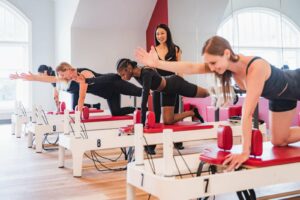 The participant faces downward on all fours for this exercise. Then, simply lift your right arm and left leg, stretching them out away from your body, and hold this position for ten seconds.
The participant faces downward on all fours for this exercise. Then, simply lift your right arm and left leg, stretching them out away from your body, and hold this position for ten seconds.
Keeping your balance on only two limbs helps to train the fine muscles in your body to develop greater stability. When you’re done, switch sides, lifting the left arm and right leg.
On a reformer, use a loose setting, a strap on the foot, and from all fours, slowly move your strapped leg back. Over time, you can progress to add in a forward, opposing arm for increased balance skills.
2. Single Leg Stretch
Participants lie on their back for this exercise, either on a reformer or on a mat on the floor. Then, bring one leg up and grasp the knee while extending the other leg straight out.
This can be a freeing exercise for the hip joints and surrounding area, which may help to alleviate back pain. Keep alternating sides, bringing one knee up while stretching out the other leg. On a reformer, a strap over the foot helps add resistance and support.
3. Clams
The knees can be some of the most problematic joints in later years, but clams can strengthen the muscles supporting the knees to help you keep your balance.
When lying on your side, put one leg on top of the other, with both knees bent at around a 45-degree angle. Then, keeping your heels together without interruption, raise the top leg to open up the hip area.
Gently close the knees again and repeat, switching sides after doing a set. This can be achieved on a reformer using the larger strap over your thigh for added resistance.
4. Bridges
The lower back and hips need to be strong in order to support the spine, and while bridging doesn’t look like it’s accomplishing much, they are actually very impactful for this region of the body.
Lie on your back with the soles of your feet on the floor, creating a bend in the knee. Then, gently roll your hips upward so that your lower back and buttocks are off the ground.
Slowly return to the starting position and repeat. On a reformer, you can add variation by adding more springs for support or less springs for more challenge to the glutes and hamstrings.
5. Swimming
One of the biggest contributors to back pain is slouching or hunching forward, which becomes more common in older age as the muscles around the spine struggle to maintain good posture.
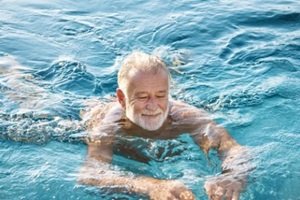 To combat this, it is helpful to move in the opposite direction (bending backward). Lie on your stomach, and fully extend your arms and legs. Then, raise both your arms and legs into the air and move them as if you are swimming.
To combat this, it is helpful to move in the opposite direction (bending backward). Lie on your stomach, and fully extend your arms and legs. Then, raise both your arms and legs into the air and move them as if you are swimming.
This a great move on a reformer, as your torso is centered on the box, giving your arms and legs more room for extension up and down.
Try Gentle Pilates for Flexibility and Joint Motion
Pilates can be adjusted to suit anyone, from beginner to expert. Whether you are as flexible as a ballerina or struggle with joint pain and mobility due to age or arthritis, there are Pilates exercises that are within your range of possibility.
The instructors at RTR Pilates always strive to include everyone, and we can help you support your body in good health for the long term, no matter your age or ability. Contact RTR Pilates to sign up for a beginner class!

